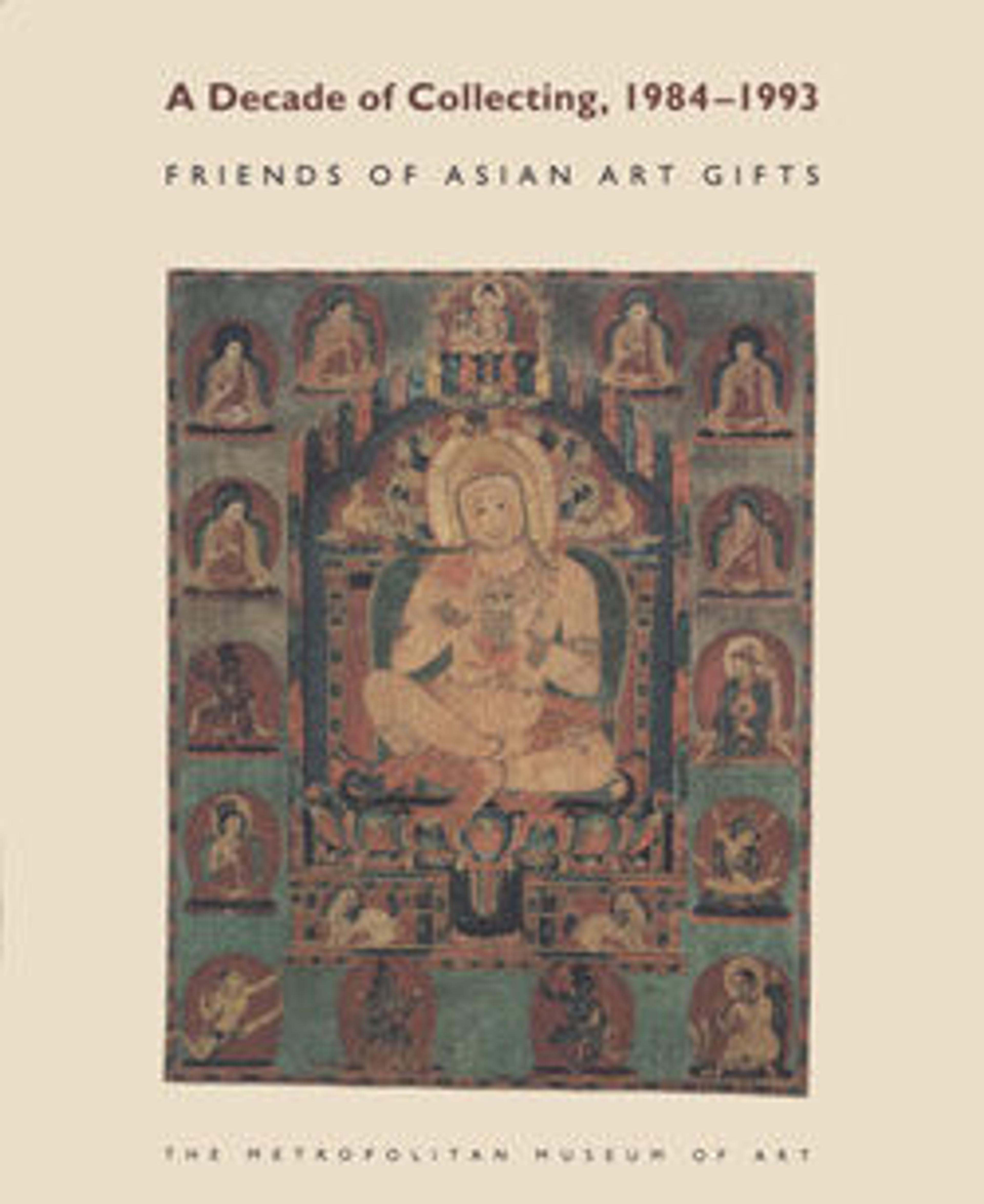Landscapes, Figures, and Flowers
This exquisite album, done when Chen Hongshou was between twenty and twenty-four, exhibits a broad range of subject matter and an extraordinarily fastidious brush style that attest to his reputation as a youthful prodigy. Not long after the album was completed, the noted connoisseur and artist Chen Jiru added his critical comments opposite several of the leaves in the album, a further confirmation of Chen Hongshou's recognition among his contemporaries.
In the first leaf, the bleak scene of an untended garden presents a powerful image of the decay infecting late Ming society just twenty–five years before the dynasty was toppled by the Manchus. In his accompanying inscription Chen asks, "Does anybody notice?" In subsequent leaves, Chen's evocations of Li Gonglin's (ca. 1041–1106) monochrome drawing (baimiao) figural style, Ni Zan's (1306–1374) dry trees, Wang Meng's (ca. 1308–1385) cloudlike mountains, and Qian Xuan's (ca. 1235–before 1307) archaic "blue-and-green" landscapes reveal his command of past idioms and his affinity for earlier scholar-recluse artists, while a depiction of the Solitary Elegant Peak in Guilin reveals Chen's early interest in the fantastic landscapes of the eccentric professional artist Wu Bin (ca. 1583–1626).
In the first leaf, the bleak scene of an untended garden presents a powerful image of the decay infecting late Ming society just twenty–five years before the dynasty was toppled by the Manchus. In his accompanying inscription Chen asks, "Does anybody notice?" In subsequent leaves, Chen's evocations of Li Gonglin's (ca. 1041–1106) monochrome drawing (baimiao) figural style, Ni Zan's (1306–1374) dry trees, Wang Meng's (ca. 1308–1385) cloudlike mountains, and Qian Xuan's (ca. 1235–before 1307) archaic "blue-and-green" landscapes reveal his command of past idioms and his affinity for earlier scholar-recluse artists, while a depiction of the Solitary Elegant Peak in Guilin reveals Chen's early interest in the fantastic landscapes of the eccentric professional artist Wu Bin (ca. 1583–1626).
Artwork Details
- 明/清 陳洪綬 山水人物花卉圖 冊
- Title: Landscapes, Figures, and Flowers
- Artist: Chen Hongshou (Chinese, 1598/99–1652)
- Period: Ming dynasty (1368–1644)
- Date: dated 1618–22
- Culture: China
- Medium: Album of twelve leaves; ink and color on paper
- Dimensions: Image: 8 3/4 × 3 5/8 in. (22.2 × 9.2 cm)
Inscription: 8 3/4 × 3 5/8 in. (22.2 × 9.2 cm) - Classification: Paintings
- Credit Line: Purchase, Friends of Far Eastern Art Gifts, 1985
- Object Number: 1985.121a–l
- Curatorial Department: Asian Art
Audio
7363. Landscapes, Figures, and Flowers
0:00
0:00
We're sorry, the transcript for this audio track is not available at this time. Please email info@metmuseum.org to request a transcript for this track.
More Artwork
Research Resources
The Met provides unparalleled resources for research and welcomes an international community of students and scholars. The Met's Open Access API is where creators and researchers can connect to the The Met collection. Open Access data and public domain images are available for unrestricted commercial and noncommercial use without permission or fee.
To request images under copyright and other restrictions, please use this Image Request form.
Feedback
We continue to research and examine historical and cultural context for objects in The Met collection. If you have comments or questions about this object record, please contact us using the form below. The Museum looks forward to receiving your comments.
